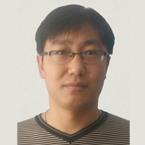Invited Speaker---Dr. Chunlei Wang

Dr. Chunlei Wang, Professor, Advanced Photonics Center, Southeast University, Nanjing, China
Prof. Dr. Chunlei Wang received his B.A. at Jilin University in 2003. From 2003 to 2008, he studied in state key laboratory of supramolecular and structure and materials in Jilin University. After received his Ph. D, he became a formal faculty of Southeast University in China. After then, he got promotion as associate professor and professor in 2012 and 2016, respectively. In 2017, he began to act as a committee Member of the Jiangsu province micro-nano photonics specialized committee. From 2017 to 2018, he became a visiting scholar at quantum-nanocrystal center at University of Waterloo in Canada. His current research interest is the synthesis and application of luminescent nanocrystals. He has published overthan 80 papers in journals of Adv. Mater., Adv. Funct. Mater., Nanoscale, J. Mater. Chem. A and so on.
Speech Title: Spontaneous Morphology Reconfiguration of Luminescent CH
3NH
3PbBr
3 Perovskites from Monodispersed Nanocrystals to Discontinuous Rings by Dewetting-triggered Solute Migration
Aims: the aim of this word is to witnesses the spontaneous morphology reconfiguration of CH
3NH
3PbBr
3 perovskites via dewetting method
Methods:: 1. Synthesis of CH
3NH
3PbBr
3 NCs;
2. Making and cleaning of glass slide;
3. Preparation of CH
3NH
3PbBr
3 rings.
Results:: Morphology engineering is vital for tuning electronic and optical properties of perovskite nanocrystals (NCs). Though many 1D, 2D and 3D perovskite NCs have been prepared, perovskite rings are not reported. This work reported the preparation of perovskite rings by a simple method of dewetting perovskite NCs solution on the glass slide. Our results indicate that perovskites NCs can change their morphology from the starting nano-sized spherical shape to intermediate molecules/ions, and finally to micron-sized perovskite rings during the dewetting process. The alteration of NCs-molecules-rings is driven by the dewetting-induced alteration of solvent environment for perovskite from the initial insoluble mixture of N,N-dimethylformamide (DMF) and toluene (1:50 v/v), to intermediate soluble DMF and finally to the glass slide without solvent. During the decomposing process from starting NCs to molecules/ions, the original oleic acid ligands of perovskite NCs will be released. These oleic acid surfactants will form ligand-stabilized gas bubbles, which act as in situ templates for reshaping of perovskite ring shape from molecules/ions.
Conclusion:: The mixed solvent of DMF/toluene is the key for achieving morphology reconfiguration of halide perovskites. The hiding factors behind the morphology reconfiguration are the co-effects of strong ionic nature, surfactant-controlled morphology, and defect-tolerance capacity. The extremely simple preparation method will be helpful for decreasing the cost. We think the current work is not only helpful for comprehending the environment-induced transformation of the chemical composition, crystalline structure and morphology alteration of perovskites, but also favorable for designing of more artificial perovskite structure and patterns by proper templates.



